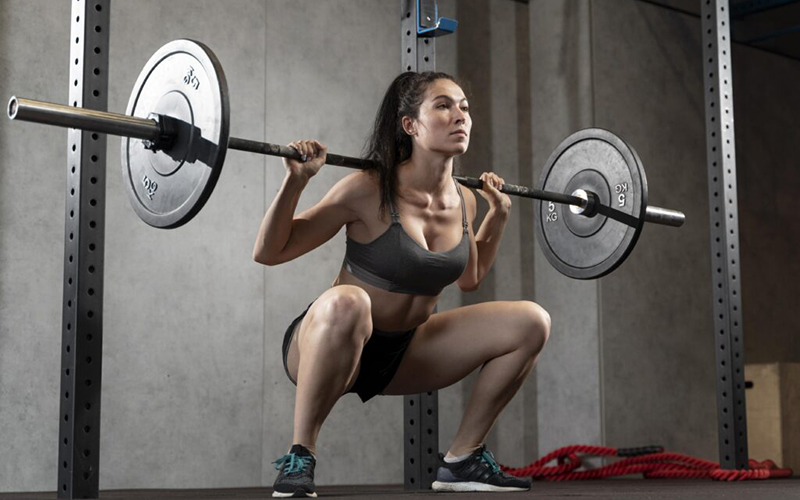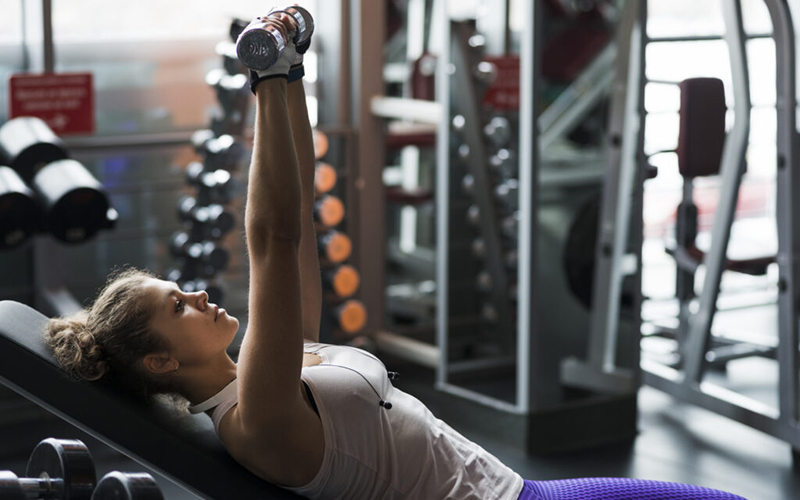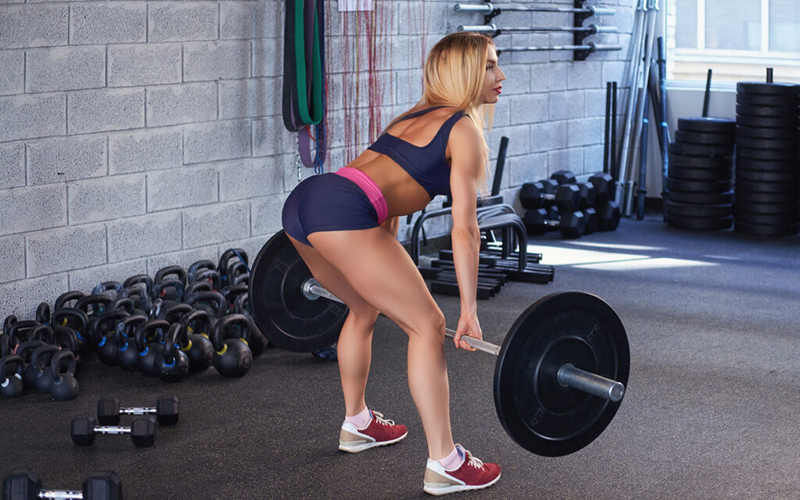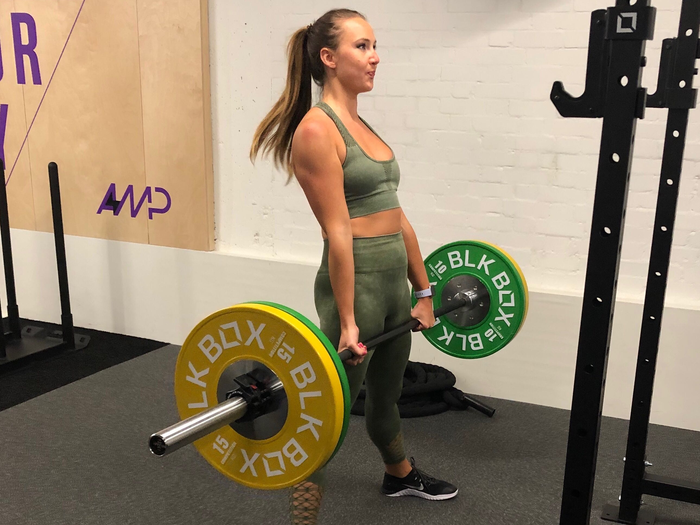Summary
Imagine yourself walking into a gym for the first time. You might feel awkward, embarrassed, and insecure because you don’t know where to start, which type of equipment to use, and what type of training to consider. You should be aware that fitness goals and ambitions are different, someone will train exclusively for strength, others for hypertrophy and endurance.
Weightlifting for women has been a taboo subject for a long period, and this physical activity was unfairly treated as the “man’s sport”. The wrong assumption has shaped the wrong opinion that weightlifting will make women too masculine and big. Weightlifting is a crucial element of a balanced fitness routine and healthy lifestyle for all women regardless of age. If you want to stay lean and strong, this exercise is right for you.

What is resistance training?
Weight training is a form of physical training that uses barbells, dumbbells, weighted machines, and other objects to build muscle and improve overall strength. It can also help to boost power, muscle endurance, and overall health. The point of weightlifting is to create damage inside your muscle fibers (tiny microscopic tears), which are repaired and ready to build stronger leaner muscles.
That’s the part where rest and nutrition come to play, muscle is not growing while you train, then you are just pumping blood in it. Real growth is happening while you are resting and “feeding” the muscles.

Benefits of weightlifting(strength) training
The positive sides of weightlifting training are countless. From a mental health perspective you “feel more confident and relaxed, every time you advance in your training; lift more weight, do more sets or reps you “ll feel seance of achievement and that is priceless. This type of training can help be more efficient in everyday activities and it is improving your overall quality of life. Other physical benefits of weightlifting include :
- It improves strength and endurance
- It improves posture, sleep, and mood
- Good for balance and decreases the risk of fall
- It keeps your bones strong and healthy
- It boosts metabolism and fat loss
- Stabilize and protect joints
- It enhances sleep quality
Strength training vs cardio

Cardio is an aerobic exercise that strengthens and improves your heart and lungs capacities, this activity is adequate for your blood vessels too. There is a vast spectrum of exercises, but we distinguish three major types (read more) :
- Low-intensity cardio (walking, light jogging, slowly lifting weights)
- Moderate-intensity cardio (doing water aerobics, dancing, riding a bike on level ground)
- Vigorous aerobic exercises (hiking uphill, fast dancing, running, jumping rope)
Compared to weight training you’ll burn more calories, doing cardio is more effective in reducing fat and body mass compared to strength training. Weight training is still burning calories and building muscle, but the catch is that a cardio workout will help you to burn more calories during that one sweaty session, but after weight training, you’ll keep burning those calories hours after the workout (or even days afterward).
The best solution is to incorporate both activities into your training and enjoy the benefits of both worlds.
Strength training vs hypertrophy training

Strength training is training your nervous system to use as many muscle fibers as possible to move the weight. Your nervous system has to adapt and find a better way to communicate with your muscles to move and create a force. If you are training for strength you have to lift heavy weights, around 85 % of your one maximal repetition. (1 REP MAX),so you want to try to do working sets of four to six reps.
Hypertrophy training refers to increasing muscle size by adding more working volume (more working sets and reps). The best rep range for hypertrophy is one that allows you to reach muscle failure in the desired number of sets. Generally speaking, the rep range should be between 8 and 12 repetitions per working set.
Be aware that women can handle more volume during training because they have better delivery of nutrients to their muscles, they will overall sustain less damage while training and they have faster recovery time between training sessions. Women are also better prepared for endurance, they can perform higher reps at a greater percentage of their one-rep max.
How to start lifting as the beginner?
Without a doubt, beginning with everything new we are doing can be hard. Firstly you need to make time for your workouts, in the morning, evening, before lunch, and after lunch, it’s up to you. You need to set realistic goals and ambitions and create a training plan. You need to know why you are training at all, and what is your main objective. Do you want to train exclusively for strength, or do you want to train for hypertrophy( increasing muscle size and gaining additional mass), or do you want to boost your endurance?
The good news is that you as a newbie it’s that you can relatively easily see gains in your strength within the first few weeks as your body adapts to a new stimulant.
Basic weight training requires barbells, dumbbells, kettlebells,machines,resistance bands and cables.[1] It would be helpful to have a pair of pawn sponges or lifting gloves, to protect your hands and be comfortable with your grip. When you start lifting heavier and more challenging weights it is handy to have a lifting belt.
Frequency of the training
This is a common question, but before answering, you have to be aware that you need to stay consistent, you can’t allow yourself to train for one week and skip the next two. You can find a plan of training online or you can invest in a personal trainer to make one for you, but you have to be persistent and respect every part of it.
If you are asking a well-known question when I am going to see the first results, well it all depends on your lifestyle, nutrition, recovery, and how much effort you put into training. Generally speaking, if you train for strength three times per week, you should boost your strength by around 10 percent. If you stay consistent in the next few months you should see an increase in strength for around 20-30 percent where you started.
Bodyweight training
This type of training is the essence of weight lifting and strength training. You need to master your bodyweight movements first if you want to advance further and add additional weight. I refer to fundamental movements like (read more):
- Bodyweight squats
- Lunges
- Pushups/knee push-ups
- Planks
- Jumping Jacks
One of the benefits of bodyweight exercises is that you can perform them almost everywhere in your home, other advantages include:
- They are very convenient
- Budget-friendly
- It can be adjusted to your fitness level
- It provides functional exercise
- The intimidation factor is low
Training with dumbbells
After you master bodyweight movements you can adjust your training by using dumbbells. Serious strength and mass goals can be achieved using dumbbells only. Whether you work out in a gym or a home they are one of the easiest types of free weights to access and it is excellent for beginners and novice lifters. There are a lot of benefits you should consider while you are using dumbbells some of them are:
- Dumbbells will help you to build muscle endurance
- They help you build muscle size and strength
- They challenge the stability and deal with muscle size imbalance
- Dumbbells allow you to optimize your range of motion
- They work different planes of motion
- They are functional and beginner-friendly
Training with barbells
You don’t have to be a professional weightlifter, or bodybuilder to do compound exercises with a barbell. Compound exercises are multi-joint and they are recruiting multiple muscle groups at the same time. I refer to bench presses, deadlifts, barbell rows, pull-ups, squats, and lunges… One of the advantages of training with barbells is the amount of weight you can lift, especially during compound movements. Working out with barbells is also great for functional strength and mobility. Other positive sides include:
- Effectiveness for building mass throughout the whole body
- Upgrading your athletic performance
- Improving your posture
Barbell moves are one of the best ways to target large muscle groups in your body but don’t be misled or confused, you can conduct compound lifts with dumbbells too. When you are lifting heavy with a barbell you gonna need a spotter, and moving the path of the barbell is more straight-up and downward, so dumbbells might have a larger range of motion. Regardless if you are training for strength or hypertrophy you should include both requisites in your training.
Common mistakes to avoid

- Lifting too heavy
We were all guilty of that at some point in our lives. You are becoming an ego-lifter when you start to disregard the proper lifting technique and all you care about is lifting more weight. That is a shortcut to injury, you may recruit other muscles to pitch in when the targeted muscle doesn’t have enough strength to do a job. Pay attention to your form and the right execution of the exercise, if the weight on the barbell or dumbbell is too heavy for you, lower it down, that is not a sign of weakness than maturity.
- You are not resting enough
Enthusiastic beginners and novice lifters are often making this kind of mistake.Overtraining is killing your goals. Here is an important fact you need to remember: You are building muscle during your rest days, not weight-lifting days. You have to give your body a chance to repair damaged muscle fibers, and you won’t achieve anything if you are regularly breaking them, or in other words constantly working out without break.
- Your diet is not following your training goals
We can discuss this a lot on this subject but I will state my point here. If you are going to have intense workout sessions you need to have proper nutrition. You need to stick to your diet plan as you stick to your training plan. A well-balanced diet protects us from overtraining and injuries. If you are active and regularly working out, you need to put in enough calories to fuel your body and muscle repair process.
Proteins are helping in rebuilding and repairing muscle fibers, carbohydrates provide your body with energy and your daily intake of proteins should be around 20-25%, while your daily intake of carbohydrates should be between 45-60%. You should also consume healthy fats such as unsaturated fats they should be also present in your nutrition with 15-20% of your daily intake.
Common myths and misconceptions
- Lifting weights is dangerous
- Women who lift weights will get bulky
- Women can’t lose weight through lifting
- It is scary to learn weightlifting
Well, the first myth is easy to disprove. Heavy weight-lifting is often recognized as a man’s sport, but in the modern world elite women, athletes can measure with male contestants. Males can lift more total weight but some female lifters even have an upper hand when it comes to a contest of strength relative to body weight. Lifting weights is not dangerous even if you are not a professional athlete, but you need to execute exercises with proper technique and never allow yourself to become an ego-lifter.
The second misconception is that you will get bulky and jacked if you are weightlifting. Well, let me convince you differently. Females can get stronger, but there is no way they can gain the same amount of muscles as men. Have you ever seen a female powerlifter, or bodybuilder have the same muscle size as a male contester? No, you haven’t, because women find it 10 times harder to build muscle due to a lack of testosterone. Building muscle takes significantly longer than burning fat and it’s a really slow process, especially for women. If you are working out three times a week you certainly won’t turn yourself into a bodybuilder or become too bulky.
The third myth is easy to bust too, as I mentioned before in a text you”ll stop burning calories once you stop doing cardio, after weight-lifting workout you” ll continue to burn calories for a longer period of time. (up to 48 hours after you finish your workout) As you build more muscle, more energy is going to be needed to maintain muscle tissue. The bottom line is more muscle you have faster your metabolism is going to be.
The fourth myth is a matter of confidence and a positive attitude. For a beginner, a lifter gym can be a whole new world, but don’t get discouraged, everyone can improve their strength and physique regardless of age. All you need are proper guidelines on where to start and how to start.
Many gym communities are most welcoming to newcomers and they are eager to help. You need to learn a proper lifting technique, especially for compound exercises. You have a lot of educational videos on YouTube or you can hire a reliable coach who will teach you the basics and track your progress. You need to stay consistent and persuasive if you want to see the results, you have to stick to your training program, as well as diet plan. If you do everything right, results will be reflected in your mirror, and strength gains will be also noticeable.(read more)
Conclusion
A weightlifting routine should be part of your life because the benefits are numerous from the physical to the mental aspect. If you exercise regularly you’ll look and feel better. You’ll be more confident, and more functional and you will appreciate your achievements even more.
If you hadn’t started yet it’s not too late, your time to shine is right now, so stop wasting time grab those barbells and dumbbells and get to work.
Source:
[1] – https://www.livestrong.com/







